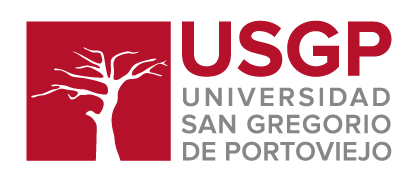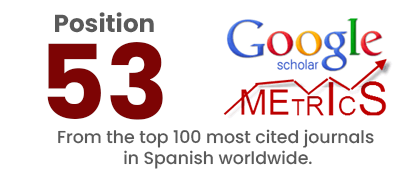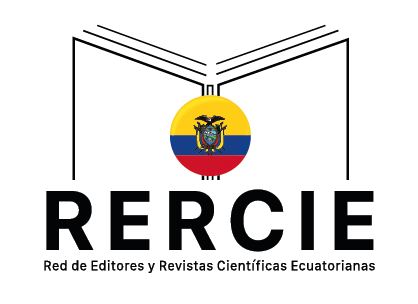Design and validation of the “dimensions of forced labour” measurement scale
DOI:
https://doi.org/10.36097/rsan.v1i61.3391Keywords:
Conditions of employment, forced labor, quality of working life, work environment, working conditionsAbstract
Forced labour is a serious form of labor exploitation that affects fundamental human and socioeconomic rights, characterized by practices of coercion, abuse and deception. This study aimed to design and validate a measurement scale that allows evaluating the key dimensions of forced labor, based on the indicators established by the International Labor Organization (ILO). The research included an exhaustive literature review, consultations with experts in labor law and the application of the instrument to a pilot sample of 150 people, later expanded to 300 participants in Coahuila, Mexico. The results of the exploratory factor analysis identified 10 main dimensions, which explained 68.5% of the total variance. These dimensions encompass explicit coercion, abusive working conditions, restriction of movement, isolation, specific vulnerabilities, economic servitude, interpersonal violence, and deception. The scale proved to be reliable, with an initial Cronbach's alpha of 0.908 and a final one of 0.863. This instrument is presented as a validated tool that facilitates the identification and analysis of forced labor, contributing to the identification of the multiple manifestations of this global phenomenon.
Downloads
References
Aniceto-Vargas, P. F., Luna-Nemecio, J., & de Lourdes Rodríguez-Peralta, M. (2021). Rúbrica socioformativa para validar el constructo" gestión del conocimiento" durante el desarrollo de proyectos formativos con estudiantes de ingeniería. Científica, 25(1), 01-14. https://doi.org/10.46842/ipn.cien.v25n1a01
Aranzazu-Moya, G. C., & Rodríguez, M. J. (2022). Validez y confiabilidad de un cuestionario sobre satisfacción en usuarios de prótesis dentales totales. Revista Ciencias de la Salud, 20(2), 95-109. https://doi.org/10.12804/revistas.urosario.edu.co/revsalud/a.10795
Arias Gonzáles, J. L. (2021). Guía para elaborar la operacionalización de variables. Espacio I+D: Innovación más Desarrollo, 10(28). https://doi.org/10.31644/IMASD.28.2021.a02
Bales, K., & Sovacool, B. K. (2021). From forests to factories: How modern slavery deepens the crisis of climate change. Energy Research & Social Science, 77. https://doi.org/10.1016/j.erss.2021.102096
Christ, K., & Helliar, C. (2021). Blockchain technology and modern slavery: Reducing deceptive recruitment in migrant worker populations. Journal of Business Researc, 131, 112-120. https://doi.org/10.1016/j.jbusres.2021.03.065
de Zegher, J. F., Liu, B., Rende Taylor, L., & Taylor, M. (2021). Low-skilled labor shortages contribute to forced labor: Evidence from Myanmar and Thailand. Labor: Supply & Demand eJournal. https://doi.org/10.2139/ssrn.3899489
Evans, H., Sadhwani, S., Singh, N., Robjant, K., & Katona, C. (2022). Prevalence of complex post-traumatic stress disorder in survivors of human trafficking and modern slavery: a systematic review. The European Journal of Psychiatry, 36(2), 94-105. https://doi.org/10.1016/j.ejpsy.2022.01.005
Halegua, A., & Chin, K. (2021). Forced Labor in the US Construction Industry. In: Chisolm-Straker, M., Chon, K. (eds) The Historical Roots of Human Trafficking. Springer, Cham. https://doi.org/10.1007/978-3-030-70675-3_6
Hammond, D. R. (2021). Modern Slavery, Human Trafficking, and Child Labor in Corporate Supply Chains: Creating Oppression-Free Portfolios. Human Trafficking, and Child Labor in Corporate Supply Chains: Creating Oppression-Free Portfolios. http://dx.doi.org/10.2139/ssrn.3930247
Han, C., Jia, F., Jiang, M., & Chen, L. (2024). Modern slavery in supply chains: a systematic literature review. International Journal of Logistics Research and Applications, 27(7), 1206-1227. https://doi.org/10.1080/13675567.2022.2118696
Herrera Masó, J. R., Calero Ricardo, J. L., González Rangel, M. Á., Collazo Ramos, M. I., & Travieso González, Y. (2022). El método de consulta a expertos en tres niveles de validación. Revista Habanera de Ciencias Médicas, 21(1). http://www.revhabanera.sld.cu/index.php/rhab/article/view/4711
Hodkinson, S. N., Lewis, H., Waite, L., & Dwyer, P. (2021). Fighting or fuelling forced labour? The Modern Slavery Act 2015, irregular migrants and the vulnerabilising role of the UK’s hostile environment. Critical Social Policy, 41(1), 68-90. https://doi.org/10.1177/0261018320904311
International Labour Organization. [ILO]. (2022). Eradicating forced labour: What works in practice. International Labour Office. https://flbusiness.network/wp-content/uploads/2022/09/ilo_gbnfl-what_works_report_final_sep22.pdf
Jackson, B. (2021). Modern slavery as a threat forests: Reviewing the links between modern slavery deforestation, and potential solutions. In J. A. Daniels (Ed.). Advances in environmental research (Vol. 84). Nova Science Publishers. https://doi.org/10.52305/GQSU4556
Lasocik, Z. (2023). Forced labor: In search for a new model of analysis. Polityka Społeczna. https://doi.org/10.5604/01.3001.0053.9024
Marcelin, L. H., Oucho, L., & Smith, A. (2024). Modern slavery risks among people lacking official documentation. UNU. https://www.freedomfund.org/app/uploads/2024/04/peoplewithoudocumentation-2024-04.pdf
Maucaylle, M. L., & Apaza, R. V. (2022). Motivación laboral y compromiso organizacional (engagement) en el personal administrativo en una municipalidad distrital, Apurímac, Perú. TecnoHumanismo, 2(4), 122-142. https://tecnohumanismo.online/index.php/tecnohumanismo/article/view/187/578
Mwemezi, P. (2023). A Critical Analysis of the State of Modern Slave in the 21st Century. International Journal of Education, Culture, and Society, 1(1), 72-85. https://doi.org/10.58578/ijecs.v1i1.1770
Pérez Alonso, E. (2022). Propuesta de incriminación de los delitos de esclavitud, servidumbre y trabajo forzoso en el Código Penal español. Revista electrónica de ciencia penal y criminología, 24, 1-50. http://criminet.ugr.es/recpc/24/recpc24-07.pdf
Rivas Vallejo, M. P. (2021). Aproximación laboral a los conceptos de esclavitud, trabajo forzoso y explotación laboral en los tratados internacionales. Revista de Estudios Jurídico Laborales y de Seguridad Social (REJLSS), (2), 99-135. https://dialnet.unirioja.es/descarga/articulo/7920179.pdf
Rivera, M. P. T. (2022). Una propuesta de modelo para medir la cultura financiera en las MYPES del estado de San Luis Potosí. Revista RELAYN. Micro y Pequeña empresa en Latinoamérica, 6(2), 94-107. https://doi.org/10.46990/relayn.2022.6.2.585
Romero, K. P., & Mora, O. M. (2020). Análisis factorial exploratorio mediante el uso de las medidas de adecuación muestral kmo y esfericidad de bartlett para determinar factores principales. Journal of science and research, 5(CININGEC), 903-924. https://doi.org/10.5281/zenodo.4453224
Salas-Torres, L. H., Aguilera-Mancilla, G., & Gutiérrez-González, L. (2019). Factores que determinan la empleabilidad de los recién egresados de la carrera de licenciados en administración de empresas . Vinculatégica EFAN, 5(2), 1571–1534. https://doi.org/10.29105/vtga5.2-762
Sánchez, J., Lesmes, M., González-Soltero, R., R-Learte, A. I., Barbero, M. G., & Gal, B. (2021). Iniciación a la investigación en educación médica: guía práctica metodológica. Educación médica, 22, 198-207. https://doi.org/10.1016/j.edumed.2021.04.004
Sánchez-Rodríguez, D., Acosta-Prado, J. C., & Tafur-Mendoza, A. A. (2021). Prácticas de gestión del conocimiento y trabajo en equipo en instituciones de educación superior: escalas de medición. Formación universitaria, 14(1), 157-168. http://dx.doi.org/10.4067/S0718-50062021000100157
Torres, L. H. S., González, L. G., & Rodríguez, M. S. (2019). Factores que determinan la empleabilidad de los recién egresados de la carrera de licenciados en administración de recursos humanos. Repositorio De La Red Internacional De Investigadores En Competitividad, 13, 1165-1181. https://www.riico.net/index.php/riico/article/view/1845
Washburn, T., Diener, M. L., Curtis, D. S., & Wright, C. A. (2022). Modern slavery and labor exploitation during the COVID-19 pandemic: a conceptual model. Global health action, 15(1). https://doi.org/10.1080/16549716.2022.2074784
Downloads
Published
How to Cite
Issue
Section
License
Copyright (c) 2025 Oscar Mario Farias Montemayor

This work is licensed under a Creative Commons Attribution-NonCommercial-NoDerivatives 4.0 International License.


















